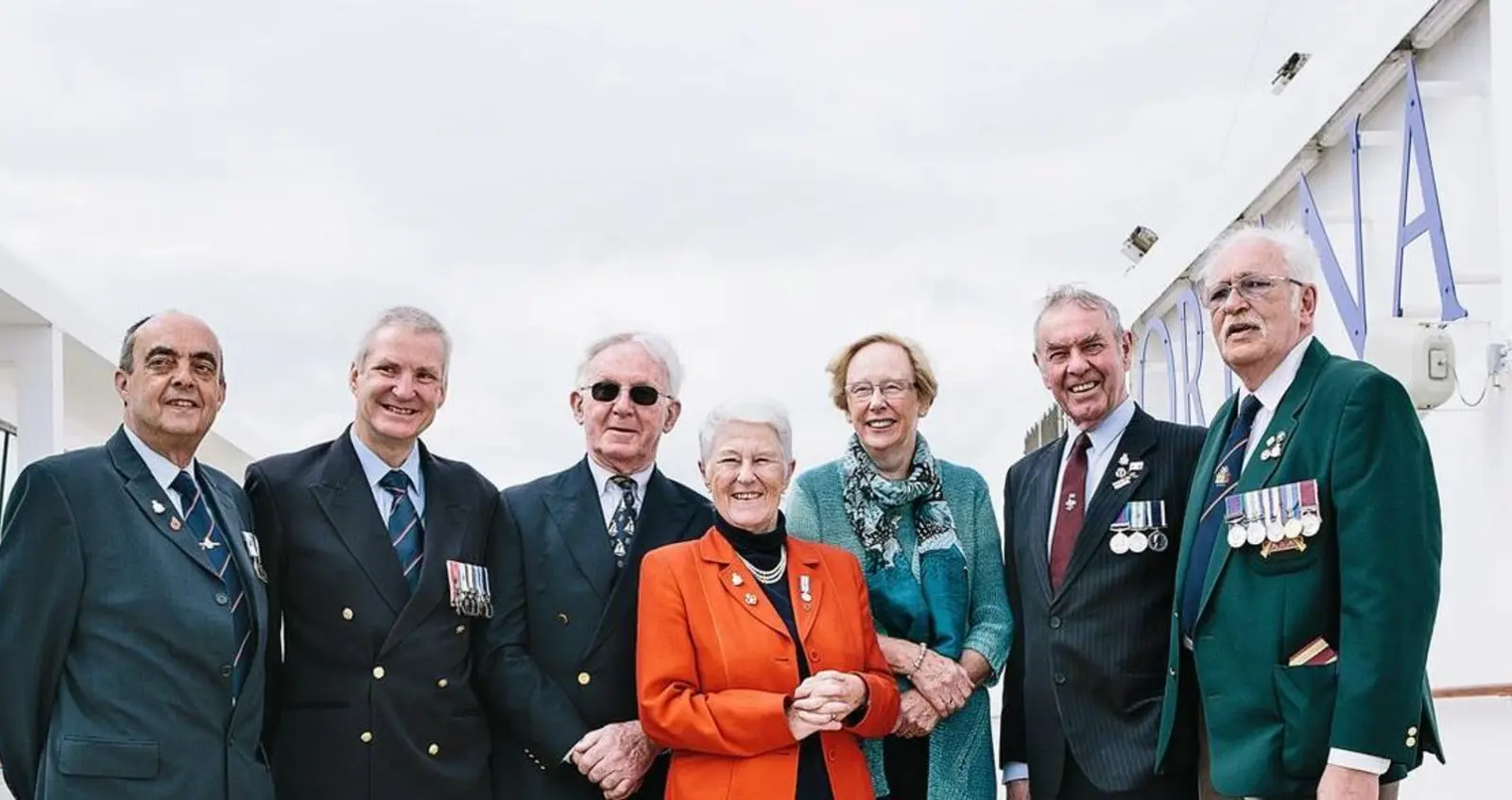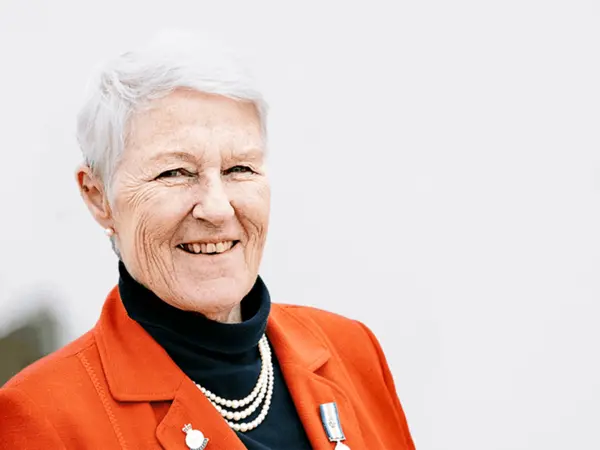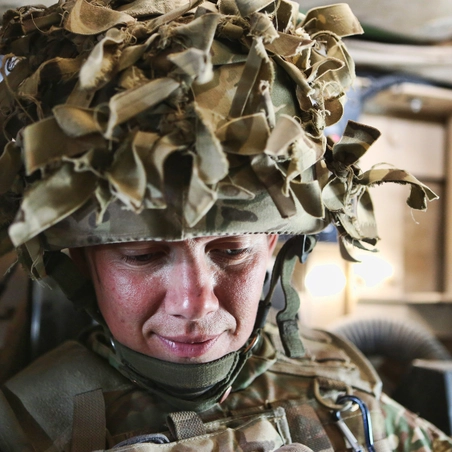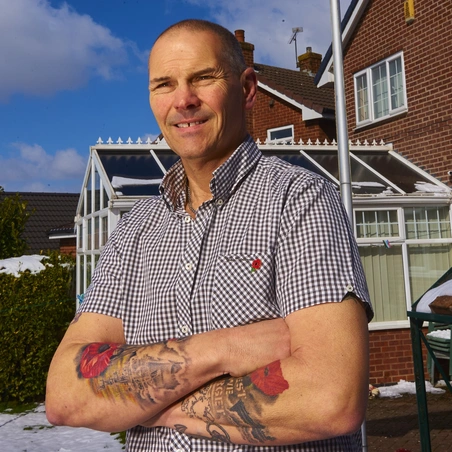Nicci Pugh joined the Royal Navy as a QARNNS nurse and shares her memories of the Falklands War.
I had been working as an Operating Theatre Sister for several years in the NHS when I saw a Royal Navy advert in around 1979 asking for volunteer nurses to enlist. My brother, who flew helicopters in the Army, encouraged me to apply, so I did – but it was made clear in the interview that QARNNS nurses did not serve at sea; this would be a land-based job.
So I was at Royal Naval Hospital Haslar in Gosport in April 1982 when Argentina invaded and occupied the Falkland Islands. Teams were immediately selected with specific nursing qualifications: experience of operating theatres, intensive care units – and in the treatment of burns, which would turn out to be critical.
Around 40 of us were selected and assigned to a ship – no more being told we couldn’t serve at sea – then flown in a Hercules to Gibraltar, where ship, stores and personnel all converged.
We heard that HMS Sheffield had been sunk… and we all knew our services were now urgently required.
Converting a cruise ship to a hospital ship
Most of us believed, and hoped, that it was an exercise; a serious one, but a situation that would be resolved politically.
But soon after leaving Ascension, heading south towards the Falklands, we heard that HMS Sheffield had been sunk – the first Royal Navy ship sunk in action since World War Two – and we all knew our services were now urgently required.
We were to position north of the Total Exclusion Zone. Initially we never intended to enter it but by the time we arrived, we just proceeded into it and almost at once, received our first patients: very severely burned survivors from Sheffield who had been in the sick bay on HMS Hermes before an RN Sea King helicopter could transfer them safely across.
Of all the many pieces of equipment used to convert the ship, one stands out as being utterly crucial: our steel helicopter landing pad. It allowed us to evacuate patients directly from other ships and from the battlefield. And that reduction in time spent in casualty evacuation saved many, many lives.
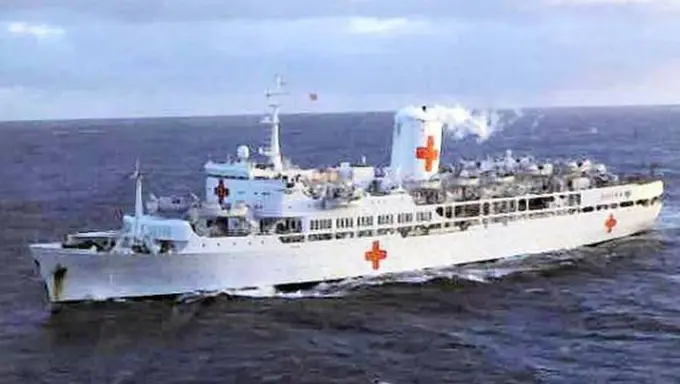
We soon established a routine: by daylight, we’d enter Falkland Sound to collect casualties from the dressing stations set up ashore; but the Geneva Convention obliges hospital ships to be fully illuminated from dusk to dawn – lit up like a Christmas tree – making us a beacon for enemy aircraft, and obliging us to sail out of the zone until the next day. Later we were able to stay put in Grantham Sound.
Most wounds were caused by shrapnel, mortar or bullets, new to most of us NHS-trained nurses, but a fellow theatre sister had worked during the Troubles in the Royal Victoria, Belfast, and I’d worked in major trauma units, so we were able to train our nurses as we went along.
There were usually two operating teams working at one time.
The theatre was midships for increased stability, and the merchant navy officers on the bridge had a telephone connected to us, and when necessary I would relay messages to the bridge asking for the ship to be turned into the wind temporarily, so a delicate piece of surgery could be done.
We were working extremely hard, particularly after the sinking of the Sir Galahad, and the whole ship’s personnel were on full alert to expect a lot of burns cases. It was a frenetic, exhausting time, split into watches for 24-hour care. And after the surrender, when casualties could be brought in much more safely, that was a very busy time too.
We arrived back in the UK in early August, stepped off the ship at Southampton for two weeks’ leave, then back to our original hospitals. We all got on with our lives, and it wasn’t until the 25th anniversary that we started to organise reunions.
Looking back, I see it as a huge privilege to have been able to help those courageous men who were so badly hurt. If a man had a lesser injury, he didn’t come to us; we only received the most severely injured.
We're here to help
.jpg?sfvrsn=fdb9ac44_0&method=CropCropArguments&width=560&height=560&Signature=142CE2BE931FF3665CC80AAC2ACB2D0870B93A6D)

